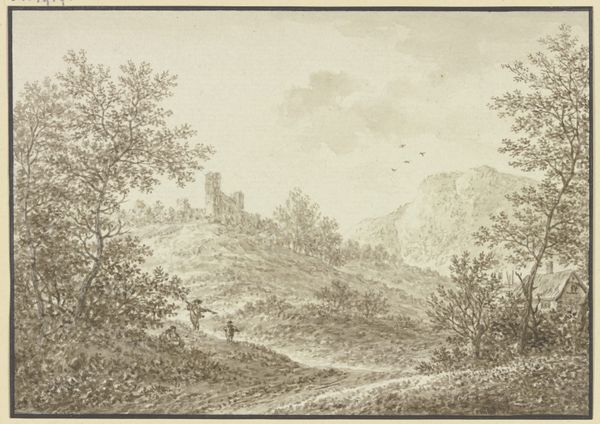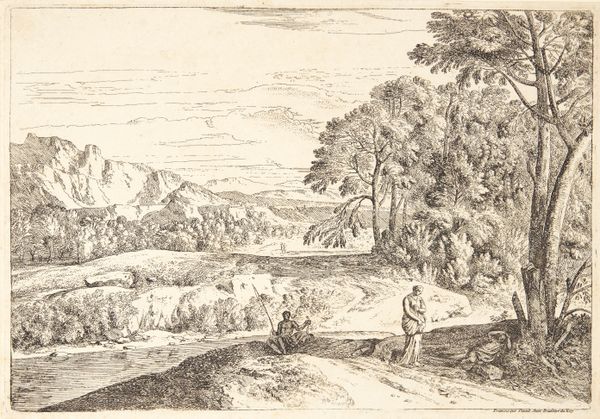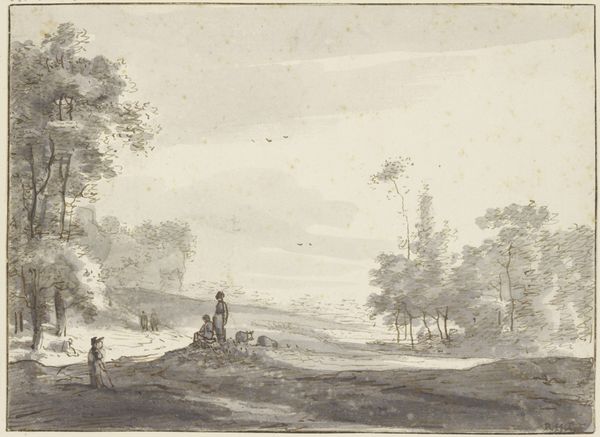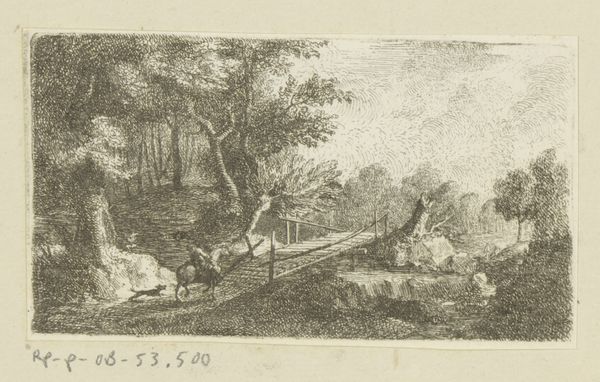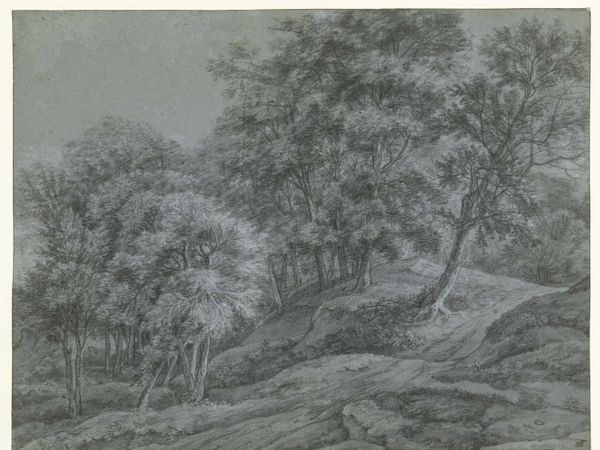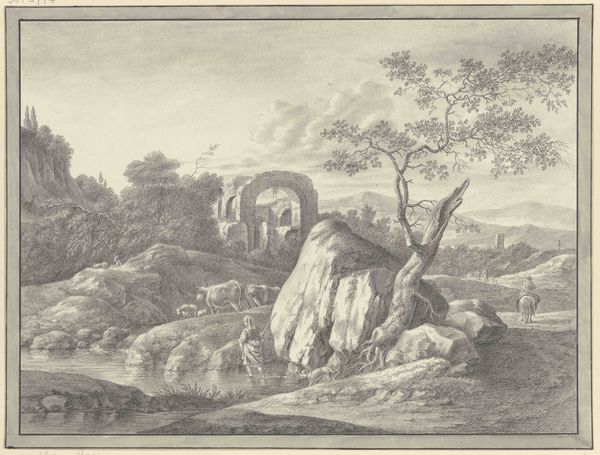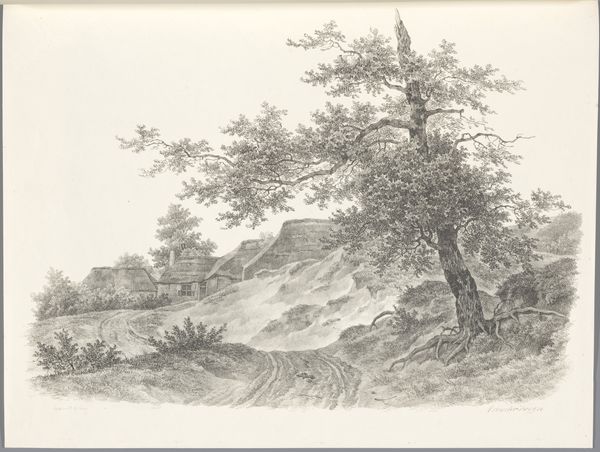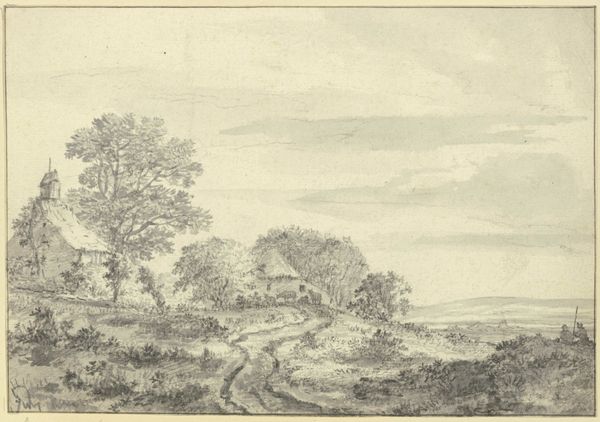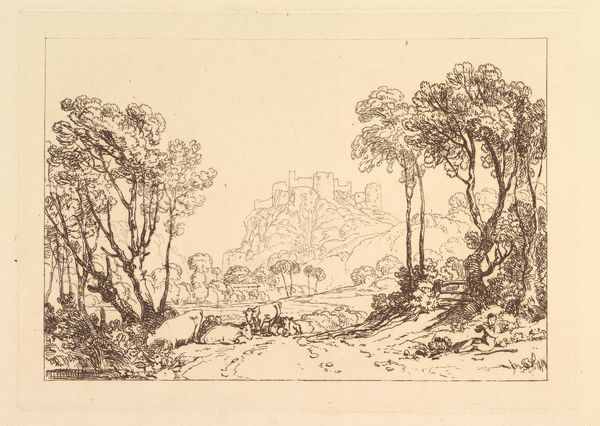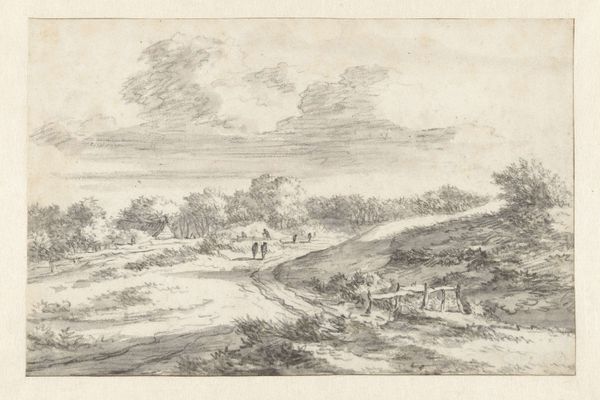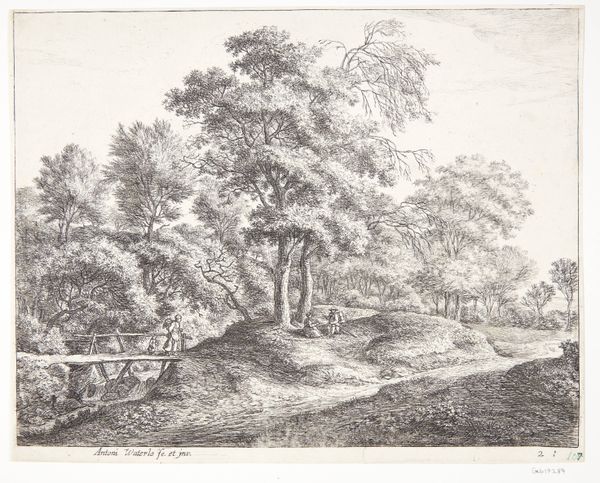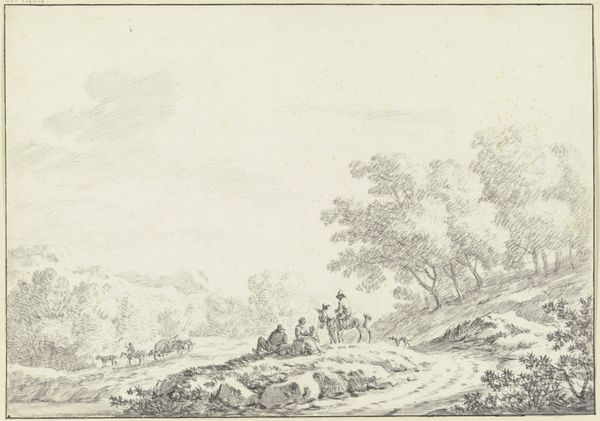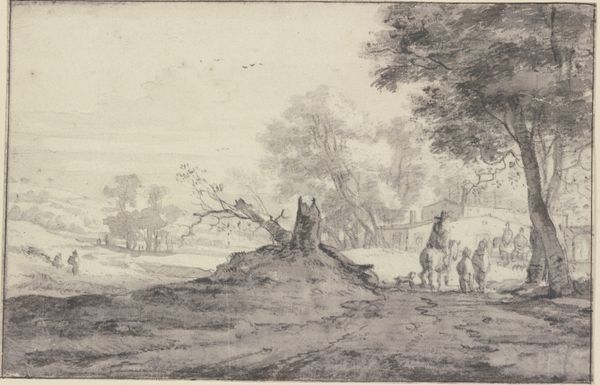
Baumbestandene Felspartie links neben einem Weg, im Vordergrund in Rückenansicht eine Zeichnerin c. 1790 - 1794
0:00
0:00
drawing, ink, pencil
#
drawing
#
neoclacissism
#
landscape
#
ink
#
romanticism
#
pencil
Copyright: Public Domain
Curator: Welcome. Here we have a drawing, in ink and pencil, titled "Baumbestandene Felspartie links neben einem Weg, im Vordergrund in Ruckenansicht eine Zeichnerin," created circa 1790-1794 by Georg Melchior Kraus. Editor: It has an introspective and isolating atmosphere. The limited tonal range contributes to that feeling of solitude. Curator: Precisely. Kraus employs a delicate touch with the pencil and ink washes to delineate form, light, and shadow. Notice how the artist emphasizes the geological formations juxtaposed against the organic textures of the trees. There's a deliberate contrast. Editor: That contrast, along with the tiny artist in the foreground, draws my attention to themes of romantic individualism and its connections to nature and self-reflection during a tumultuous time of revolution and societal change. It really speaks to who had the leisure to engage in these practices. Curator: One might also note, though, the classical structuring evident within its spatial arrangements, from foreground to middle ground. Editor: Of course, this neoclassical element doesn't undermine the budding romantic spirit; instead, the convergence underscores the period's intellectual dynamics. In other words, Kraus shows a specific type of human aesthetic interest and access to resources that very few had in the era, especially female-identifying people. Curator: The artist has not only observed but constructed. The subtle tonalities and skillful layering add a compelling level of visual and aesthetic complexity. Editor: Agreed. As our eye travels, this piece evokes not only visual interest, but also prompts thoughts about history, identity, and even artistic practice in the era of its creation. Curator: Indeed. Through line, composition, and tonal variations, Kraus compels us to consider not just what he has depicted but how effectively he's captured a specific aesthetic vision through a particular technique. Editor: It reminds me to look past face value to explore how nature can serve as a lens to scrutinize prevailing power structures.
Comments
No comments
Be the first to comment and join the conversation on the ultimate creative platform.
